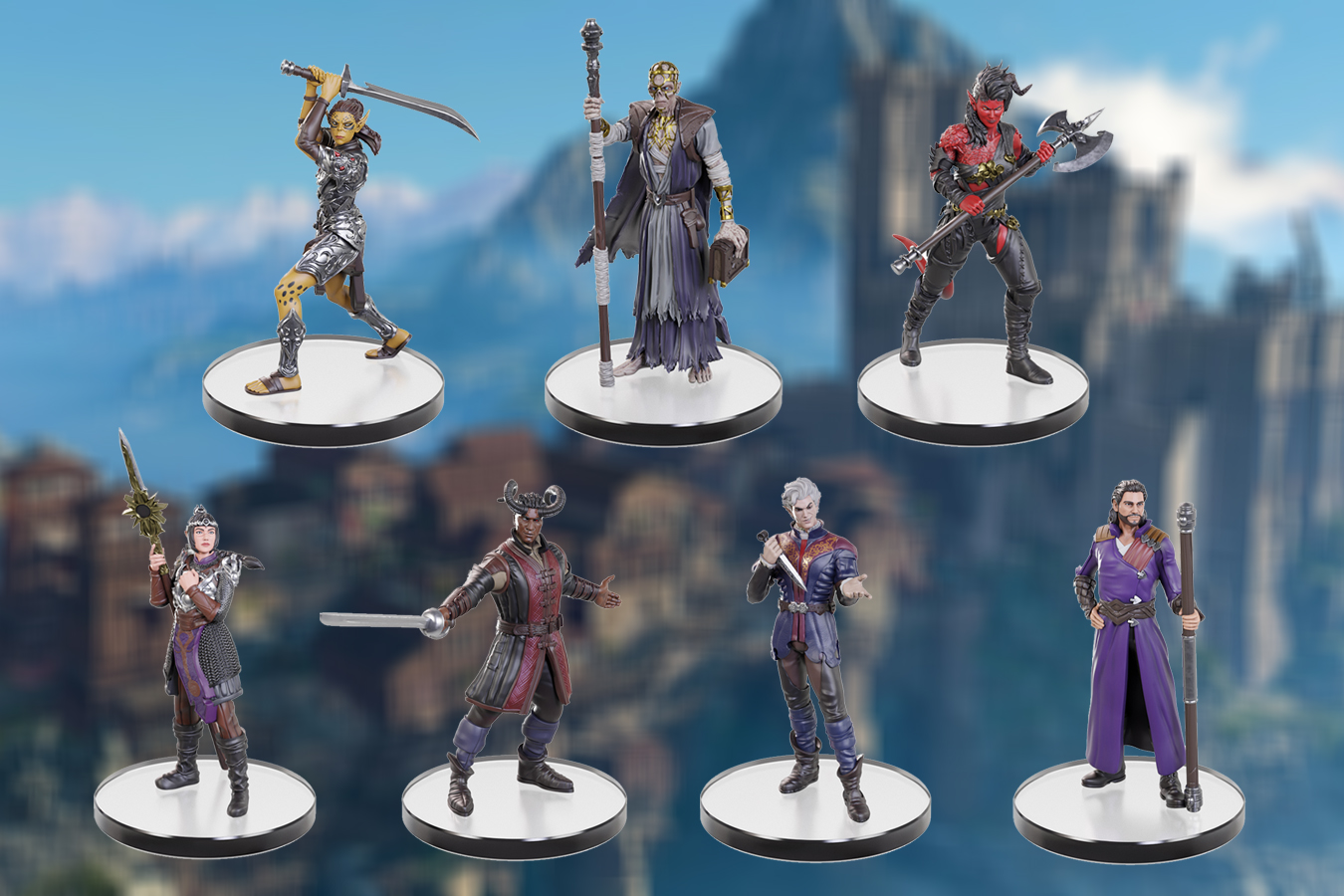It’s safe to say that Gray Zone Warfare isn’t trying to be an accessible extraction shooter like Call of Duty Warzone’s DMZ mode, but rather one for the hardcore realism set who want to feel the thrill of high-stakes victory and the agony of bleeding out after getting shot in the leg as you try to limp toward the chopper. Not everyone wants to fuss with deciding between 7.32 parabellum vs full metal jacket rounds, or dealing with the fact that 5.56x59mm rounds don’t fit in a magazine for 5.56x72mm. But for those who do, it serves that audience fairly well in its early access state – at least, when it isn’t crashing, failing to register clear hits, or making you and your friends wait in line for your ride home.
You and your four-person squad undertake very basic missions into hostile territory, completing tasks, clearing AI enemies, and gathering gear or quest items to take back with you. Dying on the battlefield means any equipment on you is lost, as you respawn empty handed back at camp, which does a great job making every death feel consequential. It is often possible to find your corpse and retrieve your lost gear, but you run the risk of others scavenging your goods, or dying on the retrieval attempt, and having your body despawn, which is effective at reinforcing an exciting sense of tension. That loop of deploy, fight, and extract is engaging thanks to challenging combat, and the irresistible pull of new and better equipment.
The battlefield and equipment strongly resemble the Vietnam war era, and in keeping with that setting, surviving out there is appropriately tough. Enemies, be they AI combatants or humans from opposing factions, are observant and accurate enough to pump rounds into you with lethal efficiency if you give them the chance. The sense of danger is palpable and exciting.
They are also durable, capable of shrugging off a surprising amount of gun shots and stab wounds. Some of that can be attributed to Gray Zone Warfare’s ambitious realistic damage system. There are no “hit points” per se; instead, bodies attempt to simulate the actual effects of wounds. You won’t be able to instantly take down a bad guy by shooting them in their limbs or much of their torso, but shots to the right part of the chest or head can do the job. It elevates the importance of very accurate shooting in a way that I really like: it’s more challenging and more rewarding when you lock into a John-Wick like Zen state and decimate your adversaries with deadly precision. If it catches on, this could forever end the “LOL I killed you by shooting your foot” phenomenon of video game shooters.
However, when you’re on the receiving end it’s a great example of where simulation and fun are often at odds. Sure, you can often shrug off incoming non-lethal damage and fight a bit longer. But those wounds still exist, and eventually bleeding out after a firefight you “won” is pretty common. There are field medical options like bandages, splints, and medicines, but even if you successfully keep the looming specter of death at bay, your wounded warrior is extremely compromised and a lot harder to enjoy. It’s frustrating and anticlimactic to gear up with a squad for a deep incursion into enemy territory, only to have to limp back to extraction after the first time bullets fly because you took a few unfortunate hits. If I wanted to suffer the consequences of my sloppy mistakes in battle, I’d enlist.
But of course, the most frustrating times are the too frequent occasions when the damage system just doesn’t work because hit registration is unreliable. Shots that appear to be on the mark do no damage whatsoever.
Tickets to the Gun Show
Not every bullet is realistic, but the weapons sure are – to a fault, sometimes. Take one of your starting guns, for example: the M4 rifle. While it’s hard to find a military shooter that doesn’t use the M4A1 carbine, often with a few choices of optional accessories, GZW drills down to its individual parts to an impressive degree. Want to trade in the better handling of your short barrel for the great accuracy of a longer one? Sure. Interested in that scope? Better grab the mount first, because it won’t just clip onto the weapon’s frame by itself. It’s impressive that you can buy and swap in over a dozen parts to essentially build your own M4 from scratch, transforming it from a compact and lightweight gun for close-up fighting into something longer with powerful optics to use as a versatile sniper rifle.
It’s fascinating how in-depth it is… and what an absolute pain in the ass it can be to figure out if you aren’t already a walking encyclopedia of gun parts. You can either just guess and check which parts fit together through trial and error, or jump online and learn about how it all assembles in real life. Being dense isn’t necessarily a bad thing – it’s actually one of the things I really like about GZW – but the lack of any sort of tooltips or tutorialization stands out as a big miss because it turns away people who would be interested to learn about how these guns work if it would bother to teach us. Even if you know the broad strokes, such as how hollow point rounds are a better choice for unarmored enemies because of the size of wounds they create, figuring out how to use them is way too cumbersome.
But assuming you can get over that hump, once you are geared up it’s time to head out into the field. The options here are pretty limited in the current early access version, however. You can either run around the open-world map getting into fights and gathering loot off of fallen enemies, or work through a list of tasks handed out by vendors in your camp who generally send you out into the world to find or kill something. They do a good job pushing you to interesting areas, like new towns or enemy hideouts, and the loot that you’re rewarded with at the end is often excellent.
This issue with tasks comes primarily from the shared-world nature of GZW. With multiple squads all spread around the map shooting at anything that moves, it is all too common for targets to be dead before you arrive, so you have to twiddle your thumbs until the enemies respawn. That can take around 15 minutes, and hiding in a corner somewhere waiting, hoping no other squads come through in that time to take the kill, isn’t much fun. There are also frequently objectives that’re literally locked behind doors, and the keys to open them are painfully infrequent random drops from enemies. Each key only works in one specific lock, and it’s a common enough problem that players have built coordinated key exchanges. It’s testament to what I’ve found to be a very helpful and supporting player base, but it’s ultimately a community driven Band-Aid for an unnecessary self-inflicted wound.
At least you’ll have some sights to take in while you’re waiting around, because GZW is already a very good looking game. It’s genuinely impressive how lush and full the more than 40 square kilometers of jungles, towns, and rice are on this vaguely Southeast Asian island. Dense foliage reaches far and wide and character models look great, as does the equipment, whether it’s the lovingly recreated weapons or the ‘90s-style fannypack you “liberated” from its former owner. It would be easy for that much landmass to feel empty, particularly with the lack of drivable vehicles, but here it’s really well laid out: There’s enough space between fights to take a breather, but it’s dense enough that action is never far away. Towns near starting areas are crawling with lightly armored AI enemies, but the troops you encounter become more dangerous the farther you push. Finally, there’s a bigger focus on PvP in the zones where the player factions intersect. The map is really effective at using geography as an almost natural level-select tool, and I appreciate the sense that I was in control of what sort of challenge I was in the mood to take on.
But, unsurprisingly for an early access game, it doesn’t run well right now. I had squadmates with solid PCs that would struggle with low framerates much of the time. Even my beefy RTX 3090 dips down into the 20 frames per second range when moving quickly through the jungle, which is not great when accuracy matters so much. Similarly, you need to be prepared for crashes to desktop, items disappearing from your inventory, and character models missing their heads (without having been shot there yet), to name a few issues my squad and I encountered. At this point you have to be willing to chalk up some frustrating losses that don’t have anything to do with errors you make on the battlefield. To their credit, the development team has continued to release fixes at a pretty regular cadence, but it’s impossible to know how long it’ll take to get Gray Zone out of this danger zone.
One of the areas in need of a fix is the faction system, particularly because you can only have one character on your account. When you start it up you select one of three private military contractors to represent, which is a permanent but fairly meaningless decision because they all have the same missions, gear, and vendors to pick from. There are two issues with this, and the first is that it’s a missed opportunity to create more distinct identities between groups (hopefully one that’ll be corrected). Instead, the only functional difference is which edge of the map your base of operations will occupy. But the larger issue with the faction system is you can only form squads with people in the same company as you, so if you want to play with friends you either need to all decide in advance which team to represent, or someone is going to have to delete their character entirely and start from scratch in the correct faction. Losing all your money, weapons, and task progress just to play with friends is tragically bitter pill to swallow.
As you explore farther and farther around the region you unlock various landing zones, which are critically important given how big the area is and how long walking back to base can take. The good news is that calling in a chopper to ferry you to or from a mission is easily done from the map, and the few minutes it usually takes to wait for extraction can be tense and exciting. The bad news is that our military contractors cheaped out when it came to buying birds, because each faction only has four at their disposal. “Request denied” is an aggravatingly frequent thing to hear when you are trying to hitch a ride, and it’s completely out of your control whether other teams are ahead of you in line. Worse, the helicopters aren’t immediately free once they finish a dropoff – you need to wait for them to fly off the map before they can come back and get you. It’s another unnecessary obstacle to fun, and an all too common frustrating waste of time.





